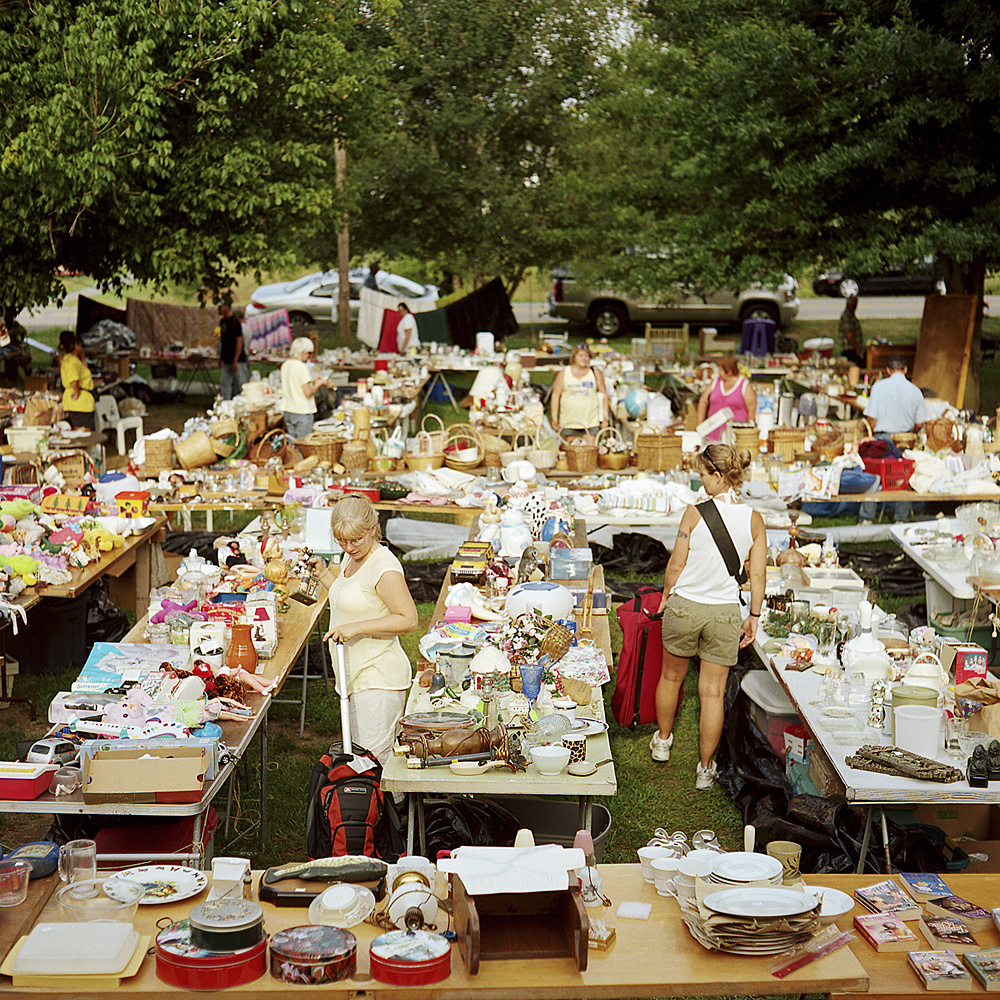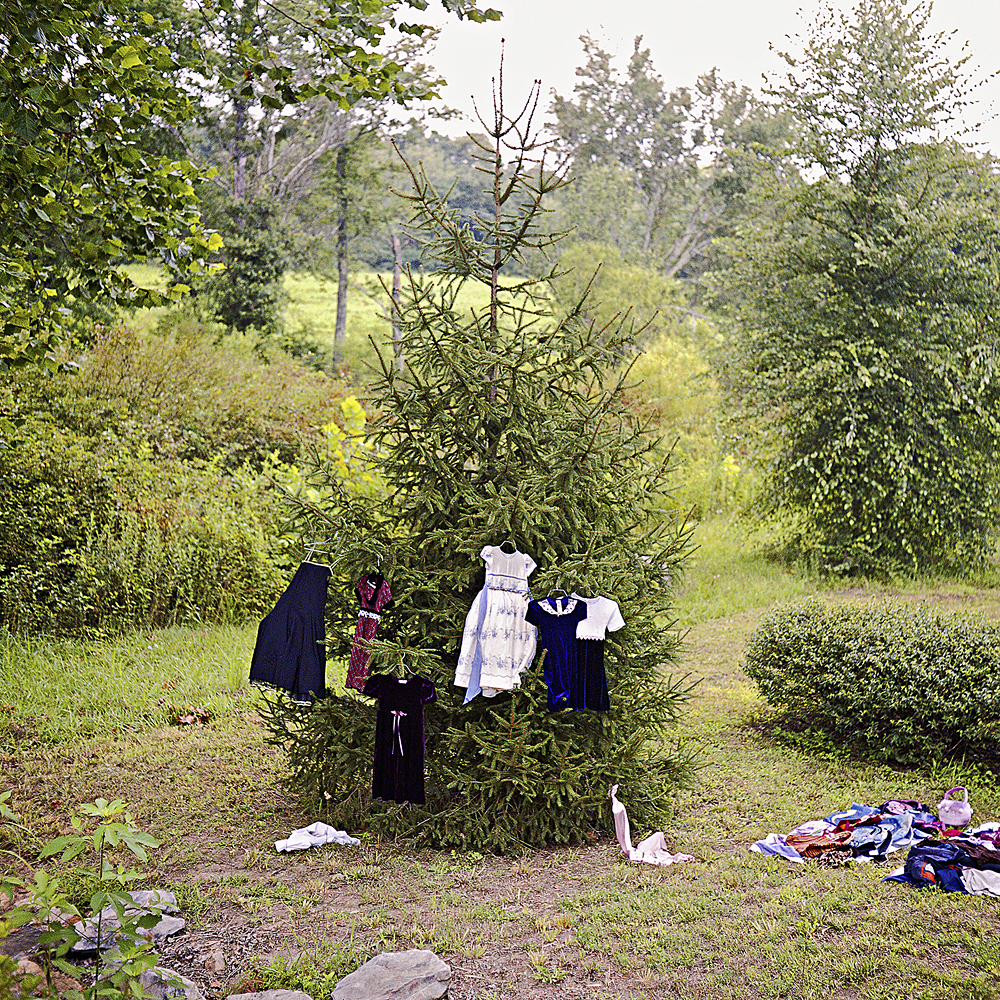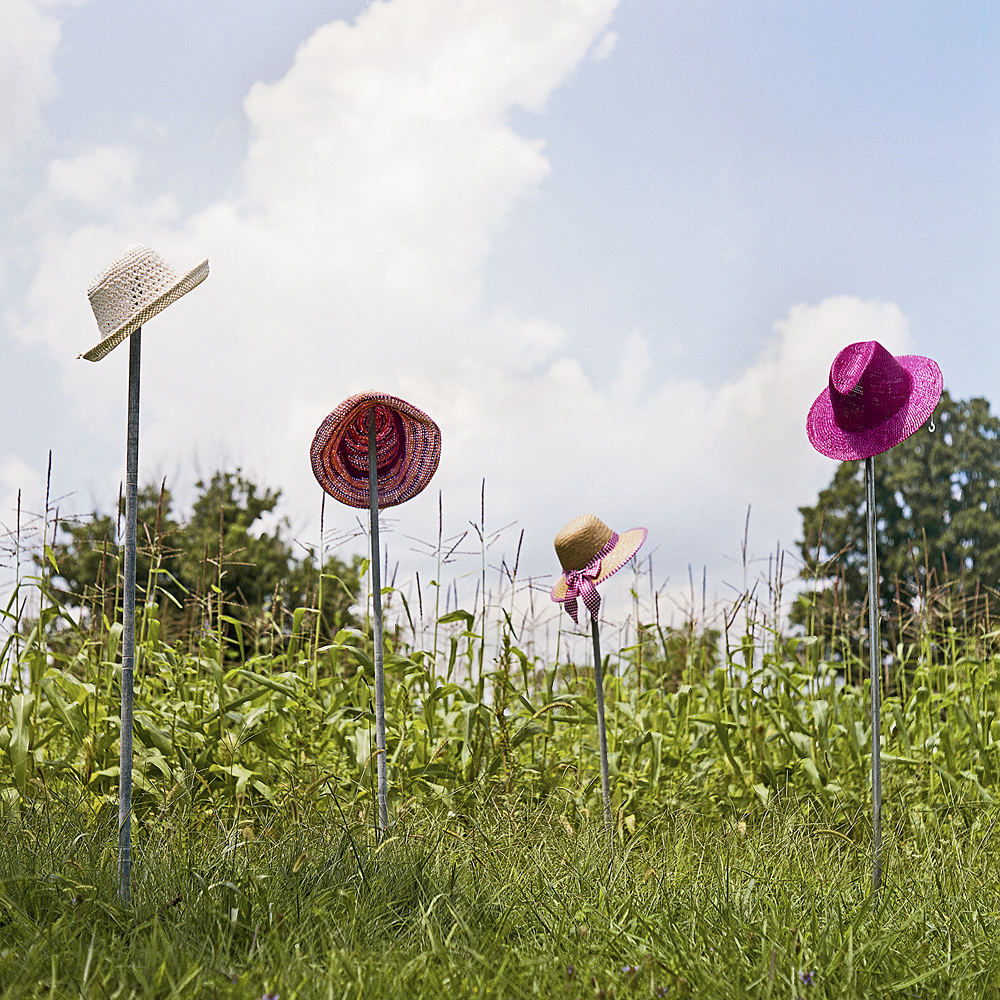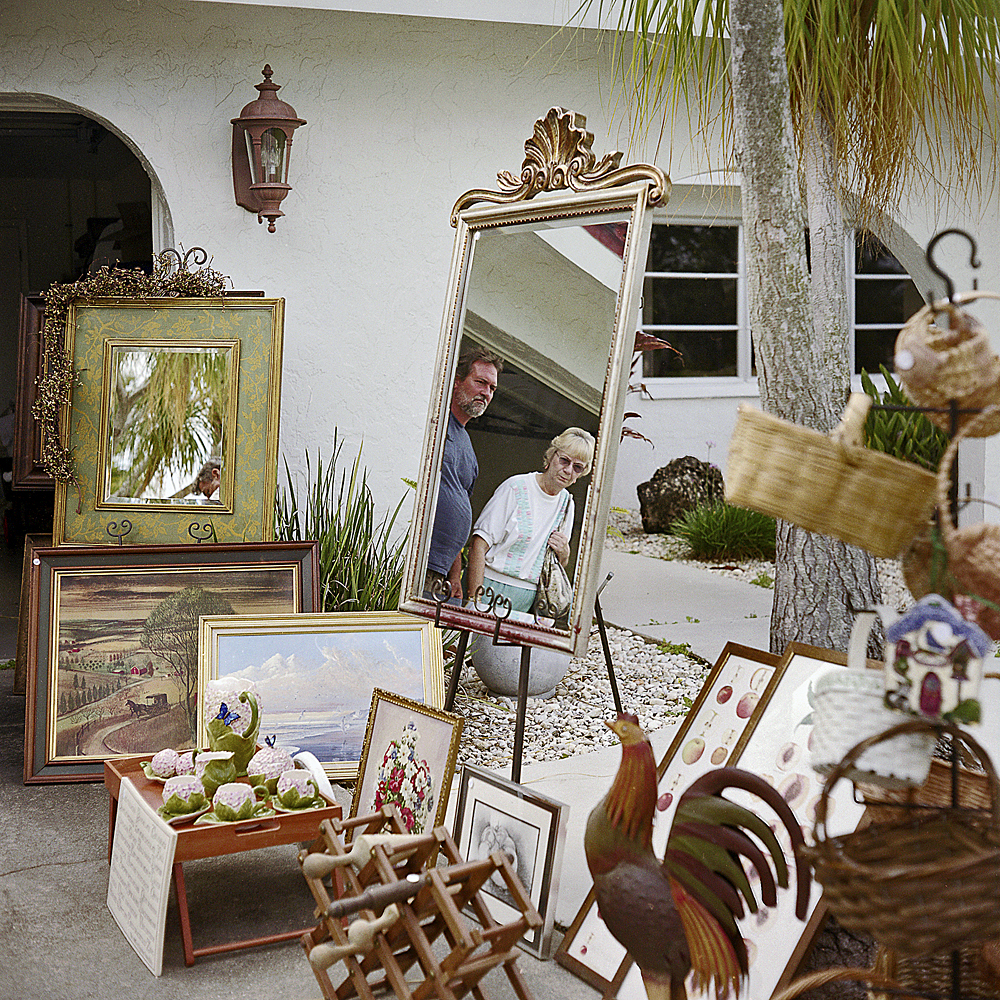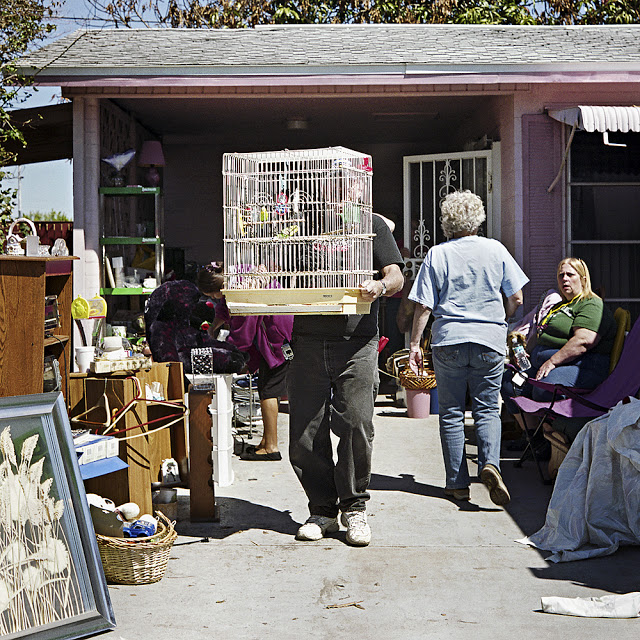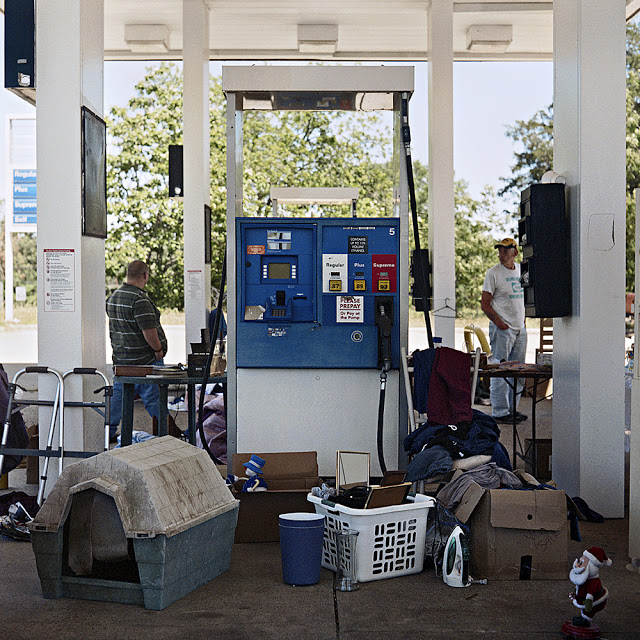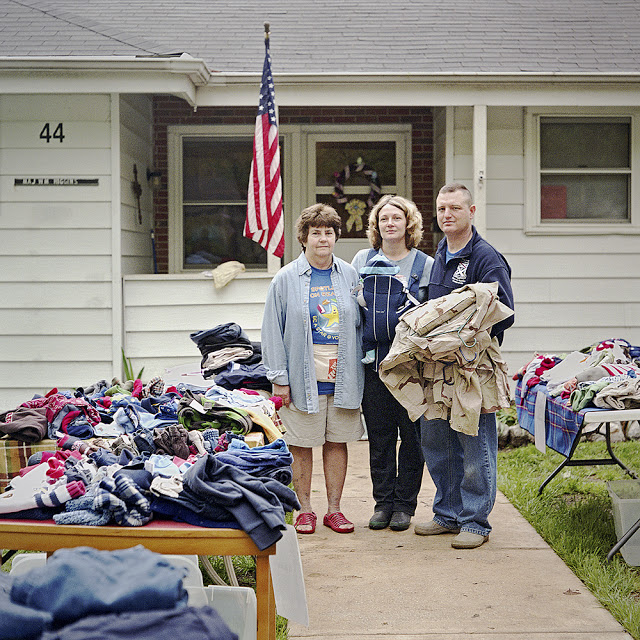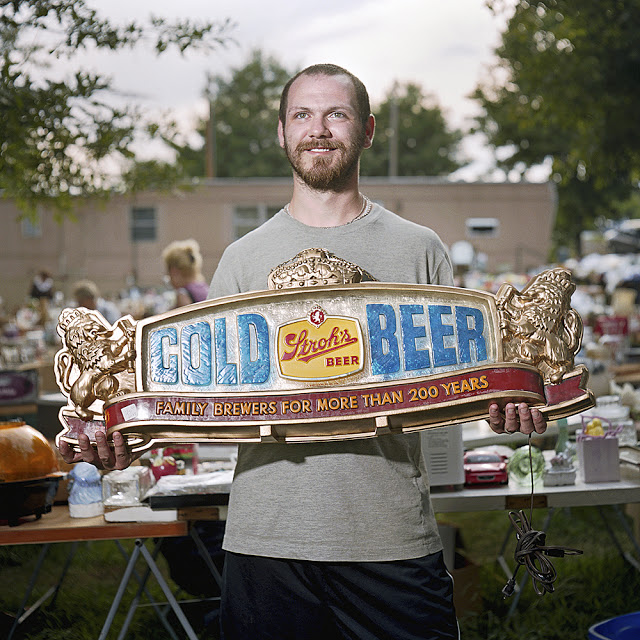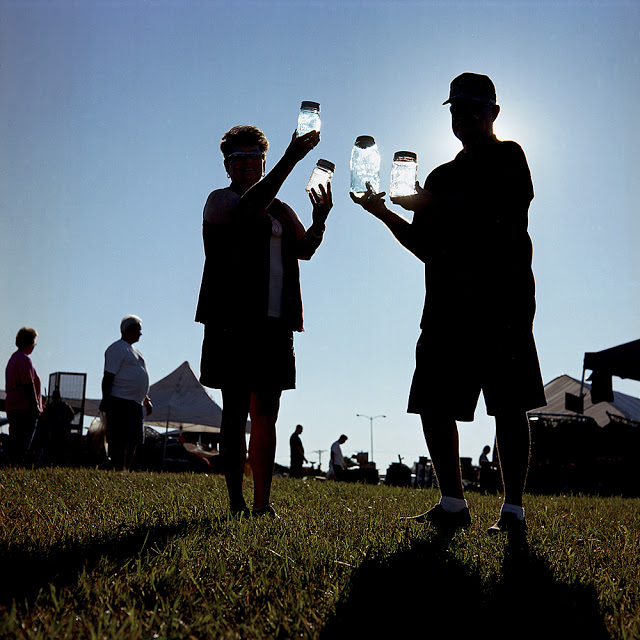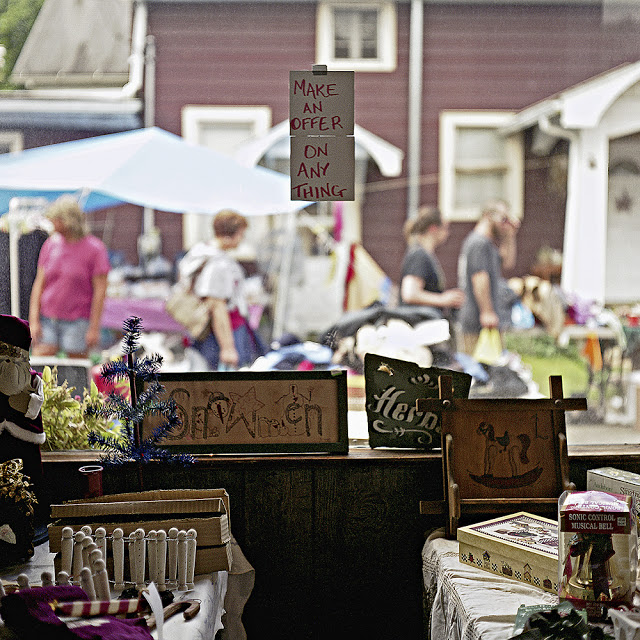Greg Ruffing
Greg has created a book on his Yard Sale work that has been included in the DIY: Photographers & Books exhibition that is currently on view at the Cleveland Museum of Art until the end of 2012. The book is a precursor to a larger publication he hopes to publish in 2013.
I was first drawn to yard sales as a sort of grassroots marketplace defined by the seller’s curious efforts of display and advertising to attract shoppers, and the buyer’s hunt for prized items and bargain prices. I was also interested in how the yard sale, as an event, transforms the private domestic space of the seller’s residence into a public commercial space to facilitate purchasing goods.
I’m also intrigued by how yard sales illustrate a specific dyadic complex of consumerism: on the one hand, they speak to our somewhat insatiable compulsion to shop and hoard possessions, and perhaps a certain cognitive blurring of the distinction between needs and wants (related to the process by which consumers assess and impose value and meaning onto material items).
And yet, on the other hand, it seems that yard sales (and other forms of resale) serve as a crucial antidote to much of the disposability and wastefulness inherent in consumerism – sending unwanted objects into secondary cycles of consumption where they may find renewed value or purpose through subsequent buyers.
Furthermore, I’ve undertaken this project in the context of the American economic Recession that began in 2008. In those past four years photographing this project, I’ve met and talked to countless families who, in the aftermath of financial hardship nationwide, have sold off possessions just to help pay their bills. In addition, while photographing yard sales in southwest Florida (which has continually had some of the highest home foreclosure rates in the U.S.), I met people who were selling goods obtained from an underground network of scavengers who take discarded possessions from the littered front yards of foreclosed and evicted homes.
Posts on Lenscratch may not be reproduced without the permission of the Lenscratch staff and the photographer.
Recommended
-
Paccarik Orue: El MuquiDecember 9th, 2025
-
Lauri Gaffin: Moving Still: A Cinematic Life Frame-by-FrameDecember 4th, 2025
-
Dani Tranchesi: Ordinary MiraclesNovember 30th, 2025
-
Art of Documentary Photography: Elliot RossOctober 30th, 2025
-
The Art of Documentary Photography: Carol GuzyOctober 29th, 2025


